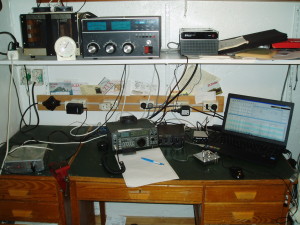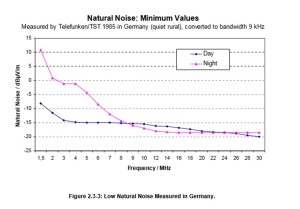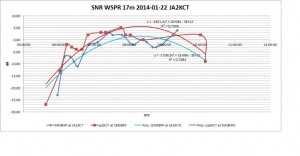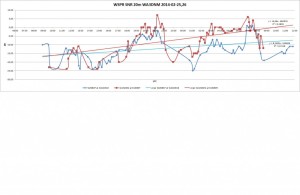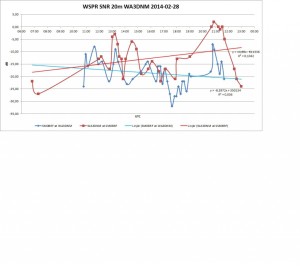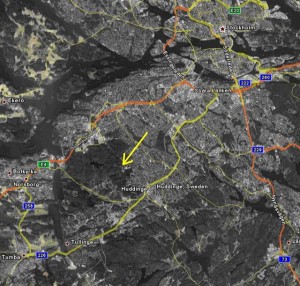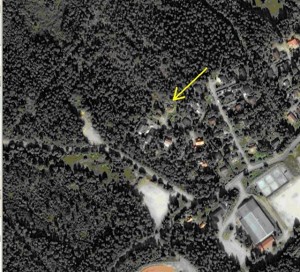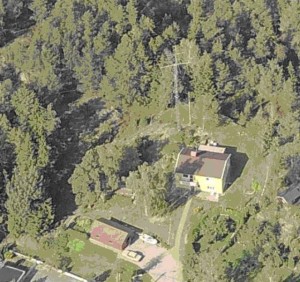In order to find out the extent to which the dipoles for 30 and 40m affected the performance of the tribander, a FB-53, a number of measurements were performed. These were carried out in October 2014, and were limited mainly to the 20-meter band. The dipole was mounted about 50 cm below the tribander.
To perform the test I was using a reference dipole a few meters at the side of the beam when beaming North America and also a reference station with which there had been several measurement series over the years comparing the FB-53 Yagi with another tribander. On the average the FB-53 has been 2 dBs better than the other tribander towards North America during afternoons.
The comparisons were made by extensive number of Reverse Beacon spots from the North American East coast and averaging a large number.
The results can be summarized as follows:
With the 30/40m dipoles along the radiator of the tribander and the coax from the dipole shorted at the lower end
- -2 dB compared with the reference dipole.
- -3 dB compared with the reference station.
With the 30/40m dipoles along the radiator of the tribander and the coax from the dipole tuned at the lower end with a capacitor for SWR=1 on 20m
1. -3 dB compared with the reference dipole.(1 dB worse than shorted coax).
(It was possible to change the F / B ratio by shifting between the capacitor and short circuiting.)
With the 30/40m dipoles along the radiator of the tribander and the coax from the dipole connected to a 50 ohm dummy load at the lower end.
13% of the power fed to the tribander was dumped in the dummy load.
- 0 dB compared with the reference dipole.
With the 30/40m dipoles along the boom of the tribander
- +3 dBs compared with the reference dipole
- +2 dBs compared with the reference station. No interaction between antennas.
Conclusion
The proximity of the 30/40m dipoles to the tribander severely deteriorates the performance of the FB-53.
A second finding is that the gain of the FB-53 is 3 dBd on 20 m.

